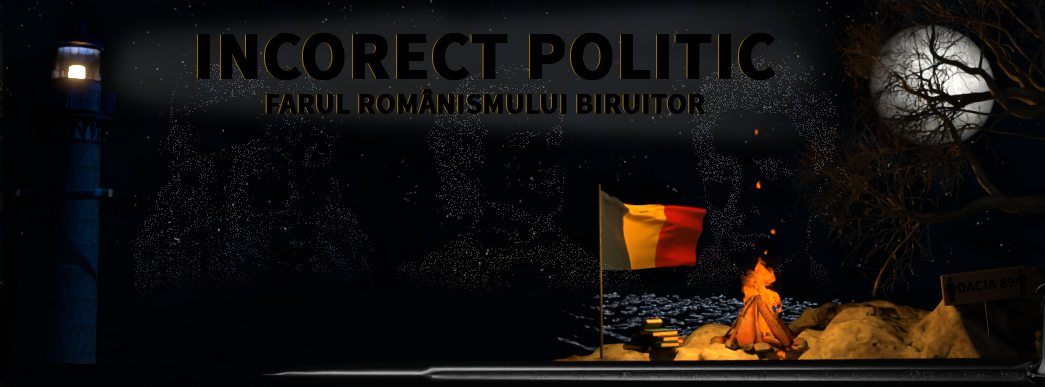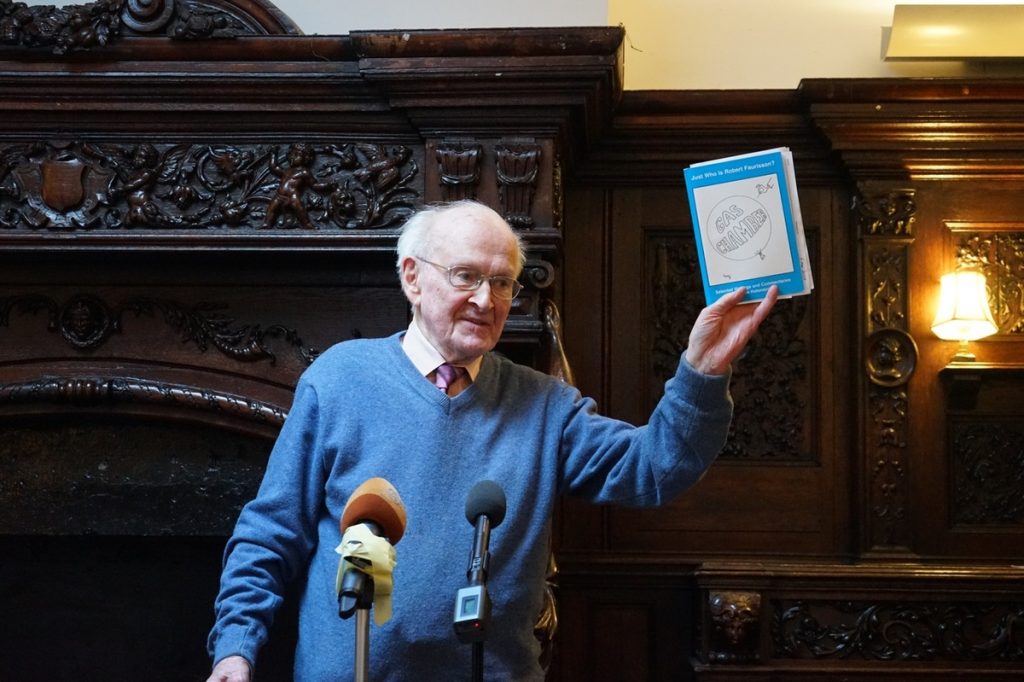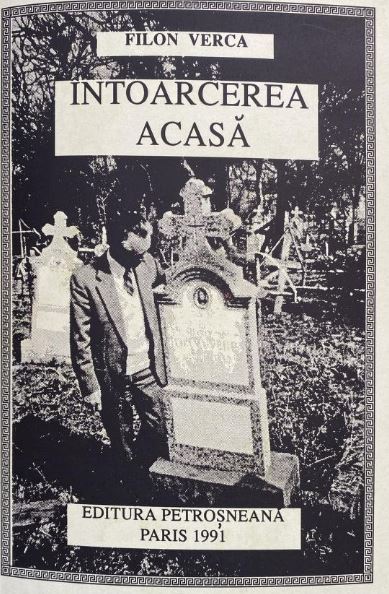Incorect Politic
Ianuarie 8, 2023
Robert Faurisson’s letter to Le Monde
Letter to Le Monde published on December 29, 1978
“The Problem of the Gas Chambers [1]“ or “The Rumour of Auschwitz”
Via L’archive Faurisson:
No-one questions the use of crematoria in certain German camps. The mere frequency of epidemics throughout Europe at war demanded the cremation, for example, of the bodies of typhus victims (see photographs).
It is the existence of “gas chambers”, veritable slaughterhouses for humans, that is called into question. Since 1945, the questioning has been growing. The mass media are aware of this fact.
In 1945, the official historiography affirmed that the “gas chambers” had been used in the former (pre-1938) Reich as well as in Austria, in Alsace as well as in Poland. Fifteen years later, in 1960, it revised its judgment: “gas chambers” had operated, “first and foremost” (?), only in Poland [2]. This drastic revision of 1960 reduced to naught a thousand “testimonies”, a thousand “proofs” of alleged gassings at Oranienburg, at Buchenwald, at Bergen-Belsen, at Dachau, at Ravensbrück, at Mauthausen. Appearing before British or French judicial bodies, the heads of Ravensbrück camp (Suhren, Schwarzhuber, Dr Treite) had admitted the existence of a “gas chamber” whose functioning they had even, in a vague manner, described. A comparable scenario had been acted out by Ziereis, of Mauthausen, or by Kramer, of Struthof. After the deaths of those condemned men it was discovered that those gassings had never taken place. Flimsiness of testimonies and confessions!
The “gas chambers” of Poland — as will surely be admitted in time — had no more reality about them. It is to the Polish and Soviet judicial bodies that we owe most of our information on them (see, for instance, the horrifying confession of R. Höss: Commandant of Auschwitz).
Today’s visitor to Auschwitz or Majdanek discovers, in the way of “gas chambers”, facilities in which any gassings would have spelt catastrophe for the gassers and their entourage. A collective execution by gas, supposing that it were practicable, could not at all be likened either to a suicidal or to an accidental gassing. In order to gas a single convict at a time, with his wrists and ankles shackled, the Americans employ a special gas [hydrogen cyanide] within a small space, from which, after its use, it is extracted and subsequently neutralised. So then, how could two thousand people (and even three thousand) be held in an enclosure of 210 square metres (!), at Auschwitz, for example, to have a common and powerful insecticide called Zyklon B poured onto them (!); finally, just after the victims’ death, how could a team be sent, without gas masks, into that place saturated with hydrogen cyanide in order to remove the cyanide-infused corpses? Some too little-known documents [3] show, moreover: 1) That the structure in question, which the Germans are said to have blown up shortly before their departure, was nothing but a typical morgue (Leichenkeller), built underground (to protect it from the warmth of the air) and fitted with a single small door for entry and exit; 2) That the Zyklon B could not be evacuated by a rapid ventilation and that it needed at least twenty-one hours to evaporate. Whereas thousands of documents on the Auschwitz crematoria (including invoices precise to the last Pfennig) are in our possession, neither a directive to build, nor a study, nor an order for building materials, nor a blueprint, nor a bill, nor any photograph is attested as regards the “gas chambers”, which, we are told, adjoined those crematoria. At a hundred trials (Jerusalem, Frankfurt, etc.), no evidence has been produced.
“I was at Auschwitz. There were no ‘gas chambers’ there.” Those who dare to bear witness on behalf of the accused by pronouncing that sentence are hardly listened to. They are prosecuted. Still in 1978, anyone in Germany who speaks out in favour of Thies Christophersen, author of Die Auschwitz-Lüge (“The Auschwitz Lie”), risks a conviction for “offending the memory of the dead”.
After the war, the International Red Cross (which had investigated “the rumour of Auschwitz”) [4], the Vatican (which had been quite well informed about Poland), the Nazis, the collabos, all declared, along with many others: “The ‘gas chambers’? We did not know.” But how can anyone know of things that have not existed?
Nazism is dead and gone, together with its Führer. There remains today the truth. Let us dare to tell it publicly. The non-existence of the “gas chambers” is good news for humanity. Good news that it would be wrong to keep hidden any longer [5].
December 29, 1978
___________
Notes
[1] The phrase is that of Olga Wormser-Migot (Le Système concentrationnaire nazi, thesis published by the Presses Universitaires de France, Paris 1968).
[2] “Keine Vergassung in Dachau”, by Dr Martin Broszat, director of the Institute of Contemporary History in Munich (Die Zeit, August 19, 1960, p. 16).
[3] On the one hand, photos from the Auschwitz Museum (negatives 519 and 6228), and, on the other hand, papers from the Nuremberg trial (NI-9098 and NI-9912).
[4] See Documents relating to the work of the International Committee of the Red Cross for the benefit of civilian detainees in German concentration camps between 1939 and 1945, Geneva 1975 [French edition 1946] reproducing in part (I have a copy of the full confidential text) document No. 9925: “Visit by an ICRC delegate to the Commandant of Auschwitz Camp (September 1944)”, p. 76-77 [French edition, p. 91-92]. A crucial sentence of this document was deftly truncated of three words in the book by Marc Hillel, Les Archives de l’espoir (“The Archives of Hope”), Fayard, Paris 1977, p. 257, and the most important sentence (“The inmates themselves said nothing [about a gas chamber]”) was simply left out.
[5] Among the score of authors who refute the existence of the “gas chambers”, I shall cite Paul Rassinier, wartime deportee (Le Véritable Procès Eichmann, Les Sept Couleurs, Paris 1962, distributed by Maurice Bardèche, 5, rue Rataud, 75005 Paris) and, especially, the American A. R. Butz for his remarkable book on The Hoax of the 20th Century, 1976, distributed by the Historical Review Press [fourth paperback edition, corrected and expanded, 2015].
 Incorect Politic O Publicație Dizidentă
Incorect Politic O Publicație Dizidentă




Cum sa fii negationist a ceva inexistent, imposibil în realitatea materiala, obiectiva?
Ești doar normal :la cap:.
Susținătorii aberației sint schizofrenici.
Fantezia nu tinerilor de realitate.
Le doresc împlinirea profeției ‘ cs prea se :,tin” in relele făcute neobosit tuturor celorlalti@
Sigur profeția cu.holocaustu’ – unde vor suferi pentru ce ai făcut și fac – toate ca efect al ideologiei lor, mascata deghizata a credință!
Va rugam sa redati textul demnului de respect si admiratie Robert Faurisson in limba franceza, asa cum a fost scris, nu in struto-camila englezeasca. Cu multumiri. MC.
scrisoare catre “Le Monde”? -ha,ha,ha: a gazat nishte ji’dovi p-acolo!!!!!!!!!
Oricum ideea e de noaptea mintii atât prin imposibilitatea fizica de a face asa ceva la un asemena nivel, câta mai ales prin macabrul și sadismul care reiese din aceast concept. Este clar ca asa ceva nu putea ieși decât dintr-o minte bolnava sau diabolică. Ori este clar ca germanii nu erau nici nebuni nici bolnavi. Și aceasta idee diabolică le aparține jidanilor. Ei sunt maeștrii minciuniii și ai înșelătoriei. Sinagoga lui satan nu se da în laturi de la nimic când vine vorba de a-i înșela, a-i prosti sau a-i jefui și omori pe goimi.
Saracu’ Robert Faurisson câtā bataie a mâncat de-a lungul vietii, numai ptr.ca a avut curajul sa spuna Adevarul despre “holocaustul” sionistilor.
Odihneasca-se în pace !